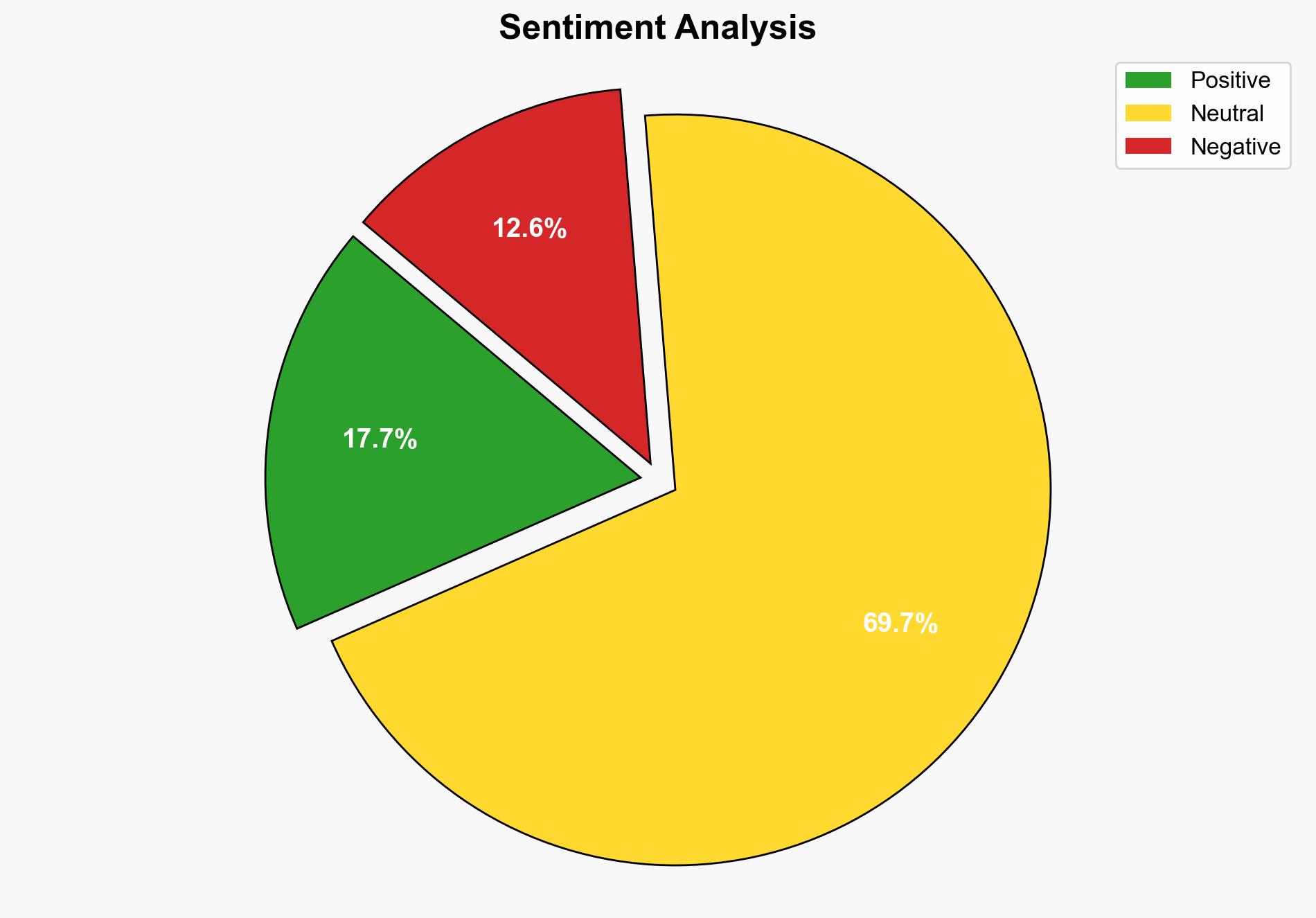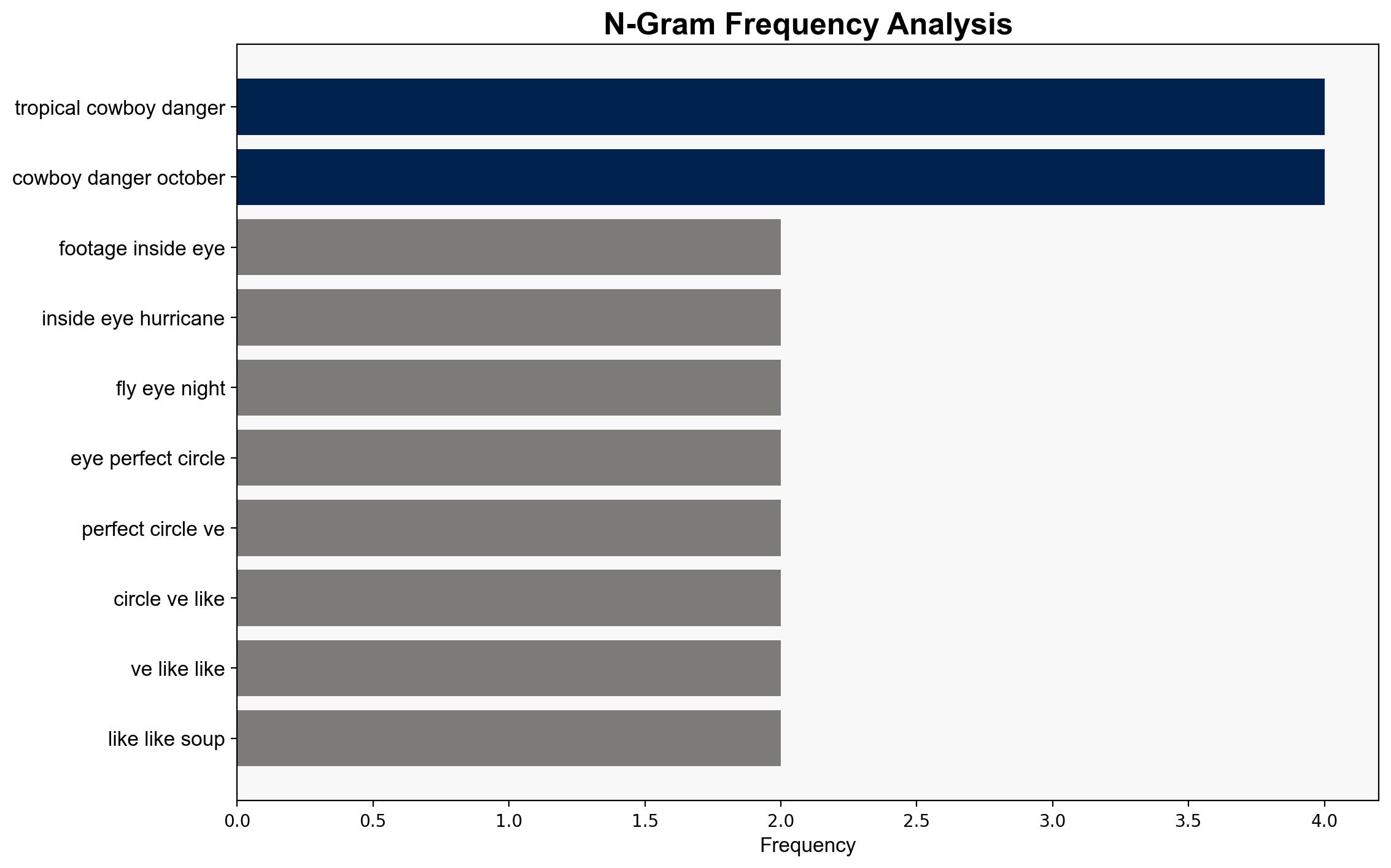Storm Chasers Venture Into Hurricane Melissa and Capture Its Eerie Eye Wall on Video – My Modern Met
Published on: 2025-10-30
Intelligence Report: Storm Chasers Venture Into Hurricane Melissa and Capture Its Eerie Eye Wall on Video – My Modern Met
1. BLUF (Bottom Line Up Front)
The most supported hypothesis is that the storm chasers’ activities, while risky, provide critical data that enhances meteorological understanding and disaster preparedness. Confidence level: Moderate. Recommended action: Encourage continued collaboration between storm chasers and scientific organizations to improve data collection and public safety measures.
2. Competing Hypotheses
1. **Hypothesis A**: The storm chasers’ activities are primarily motivated by the pursuit of unique footage and personal adventure, with scientific data collection being a secondary benefit.
2. **Hypothesis B**: The primary motivation for storm chasers is to gather valuable meteorological data that can improve forecasting models and disaster response strategies, with the footage serving as a tool for public engagement and awareness.
Using ACH 2.0, Hypothesis B is better supported due to the structured nature of the missions, the involvement of NOAA, and the emphasis on data collection for scientific purposes. The presence of professional meteorologists and the use of advanced equipment suggest a focus on research rather than mere adventure.
3. Key Assumptions and Red Flags
– **Assumptions**: It is assumed that the storm chasers have adequate training and equipment to safely conduct these missions. It is also assumed that the data collected is effectively utilized by scientific bodies.
– **Red Flags**: The potential for sensationalism in media coverage could skew public perception of the risks and benefits of storm chasing. There is also a lack of detailed information on how the data is integrated into broader meteorological research.
4. Implications and Strategic Risks
– **Economic**: Enhanced forecasting could mitigate economic losses from hurricanes by improving preparedness and response.
– **Geopolitical**: Improved data sharing and collaboration between countries in hurricane-prone regions could strengthen regional alliances.
– **Psychological**: Public awareness and understanding of hurricanes could improve, but there is a risk of desensitization to the dangers posed by such storms.
5. Recommendations and Outlook
- Encourage partnerships between storm chasers and scientific institutions to ensure data is effectively used.
- Develop public education campaigns to accurately convey the risks and benefits of storm chasing.
- Scenario Projections:
- Best Case: Enhanced data leads to significant improvements in hurricane forecasting and disaster response.
- Worst Case: Sensationalism leads to increased risk-taking by untrained individuals, resulting in casualties.
- Most Likely: Continued collaboration improves data collection, with moderate public engagement benefits.
6. Key Individuals and Entities
– Matthew Cappucci
– Flynonymous WX
– NOAA
– United States Air Force
7. Thematic Tags
national security threats, meteorological research, disaster preparedness, regional collaboration





